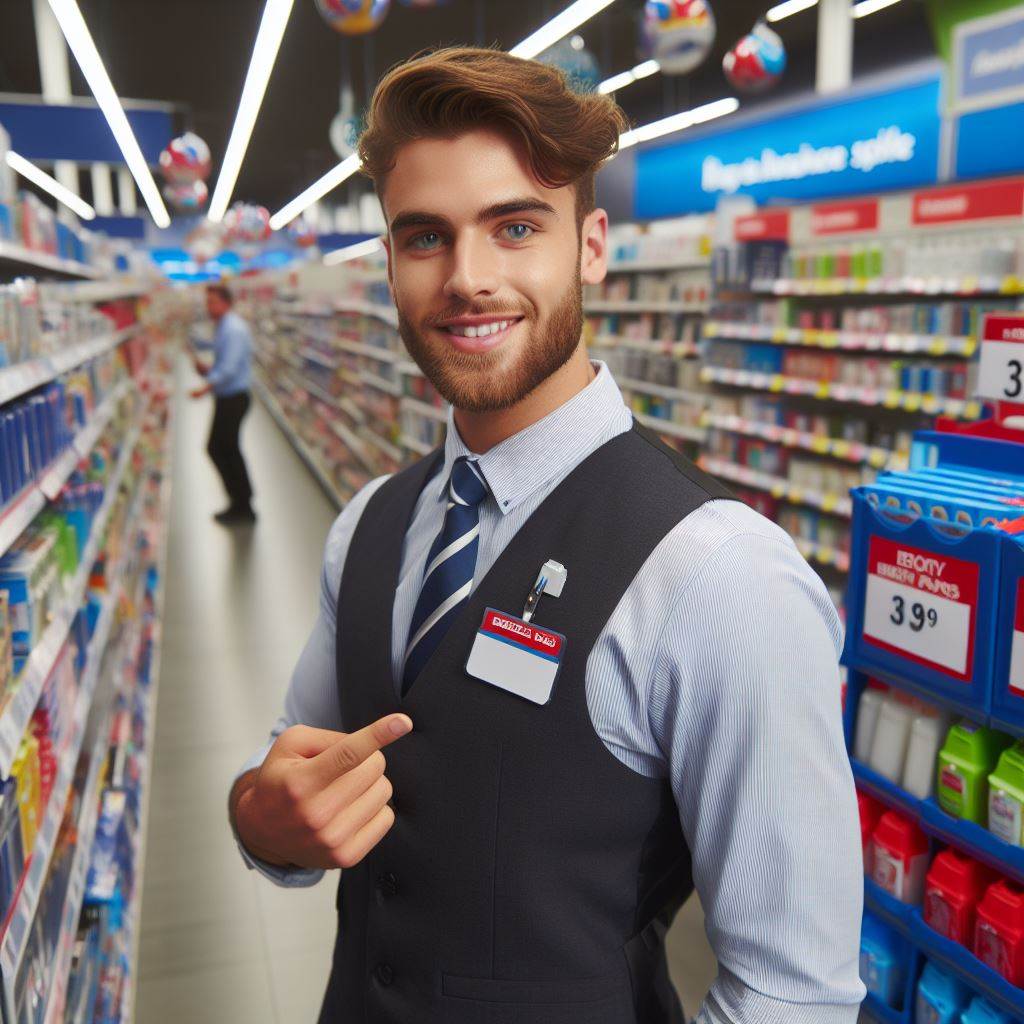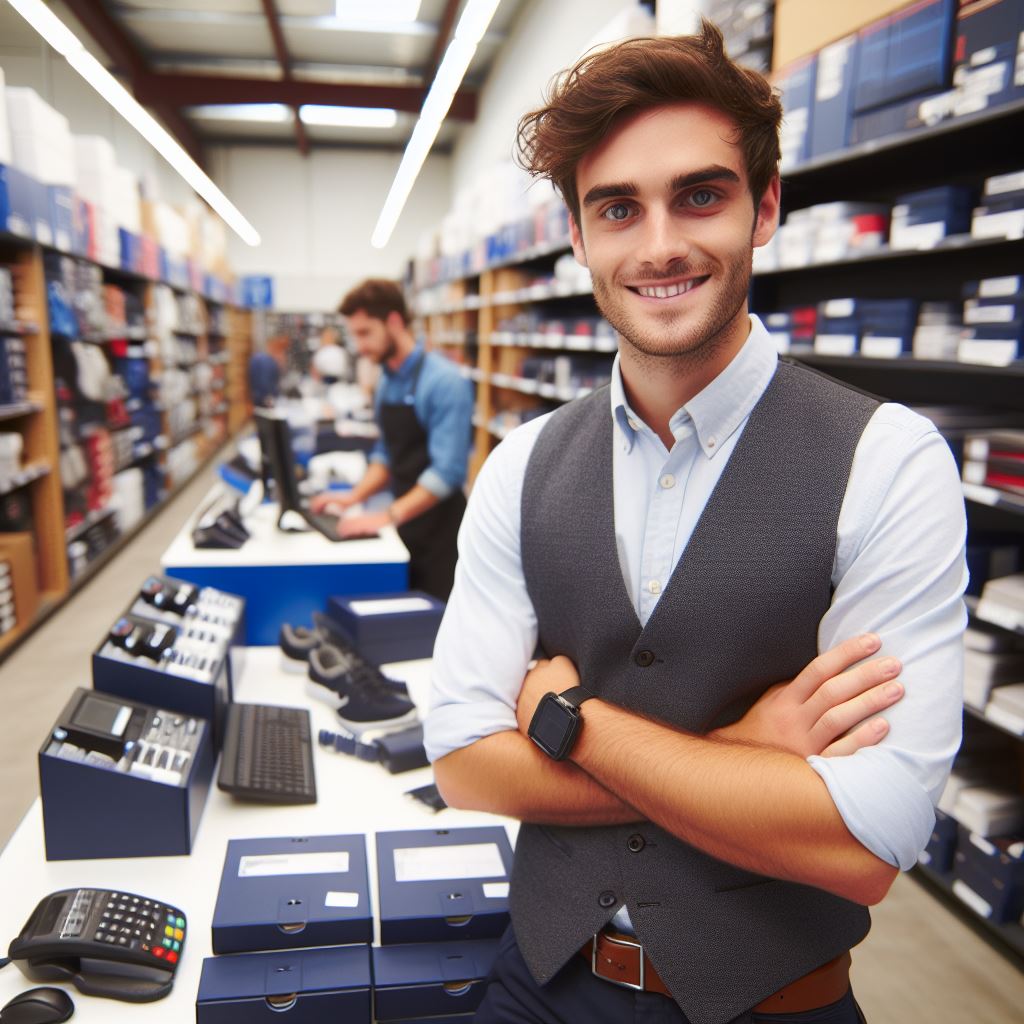Introduction
A. Importance of a unique store experience
- In Australia’s competitive retail landscape, standing out is crucial.
- Unique store experiences captivate customers, fostering loyalty.
- Exceptional experiences differentiate brands and drive profitability.
- They evoke emotions, creating lasting memories for consumers.
- Personalized interactions build strong connections between brands and shoppers.
B. Overview of the blog post
- This section delves into crafting memorable store experiences.
- We’ll explore strategies to elevate your retail environment.
- From immersive designs to interactive technologies, we’ll cover it.
- Learn how to infuse your brand’s personality into every interaction.
- Ready to transform your store into a destination? Let’s begin!
Understanding the Target Audience
A. Conducting market research
Conducting thorough market research is essential in creating a unique store experience in Australia.
This process involves gathering and analyzing information about the target audience to gain insights into their preferences, demographics, and buying behaviors.
Market research can be done through various methods such as surveys, interviews, focus groups, and online analytics.
These techniques help in understanding consumer trends, preferences, and identifying potential gaps in the market.
By conducting market research, store owners can identify the needs and desires of their target audience.
This knowledge allows them to tailor their store experience to meet those requirements.
Whether it is offering specific products, providing personalized services, or creating a visually appealing store layout, market research provides valuable insights for decision-making.
B. Identifying customer preferences and expectations
After conducting market research, it is crucial to identify the specific preferences and expectations of the target audience.
This involves analyzing the gathered data, identifying patterns, and understanding what customers look for in a store experience.
Customer preferences can vary based on factors such as age, gender, lifestyle, and cultural background.
It is important to segment the target audience and analyze their preferences accordingly.
For example, millennials might prioritize convenience, while older generations might value personalized customer service.
Understanding customer expectations means knowing what customers anticipate and desire when they visit a store.
It could be a seamless checkout process, engaging store displays, knowledgeable staff, or unique in-store promotions.
By aligning the store experience with customer preferences and expectations, retailers can create a unique and memorable experience that resonates with their target audience.
C. Analyzing competitors
Analyzing competitors is a crucial step in creating a unique store experience.
This involves studying competitors’ strategies, store layouts, product offerings, and customer experiences.
Competitor analysis helps identify gaps in the market and opportunities for differentiation.
Your Personalized Career Strategy
Unlock your potential with tailored career consulting. Get clear, actionable steps designed for your success. Start now!
Get StartedBy understanding what competitors are doing well and where they fall short, store owners can find ways to stand out and offer something unique.
Analyzing competitors can also provide insights into industry trends and best practices.
It allows store owners to benchmark their own store experience against competitors and identify areas of improvement.
Moreover, competitor analysis can help in identifying untapped market segments and unmet customer needs.
By leveraging this information, store owners can offer something new and different, thereby attracting customers and gaining a competitive edge.
In general, understanding the target audience is essential in creating a unique store experience in Australia.
Conducting market research, identifying customer preferences and expectations, and analyzing competitors are crucial steps in this process.
By gaining insights into the target audience, retailers can tailor their store experience to meet customers’ needs, stand out from competitors, and create a memorable shopping experience.
Visual Merchandising
A. Creating an inviting storefront
- Choose an attractive storefront design that entices customers to enter the store.
- Use window displays to showcase the store’s merchandise and create curiosity.
- Ensure that the storefront is well-lit and clean to make a positive first impression.
- Consider using bold and eye-catching colors to grab attention and stand out from competitors.
- Create a welcoming entrance by using plants, flowers, or other decorative elements.
- Place signage or banners outside the store to promote special offers or upcoming events.
B. Using creative displays and signage
- Arrange products in an appealing and organized manner, making it easy for customers to browse.
- Utilize different levels, pedestals, and props to create visual interest and showcase products effectively.
- Change displays regularly to provide a fresh and unique shopping experience for customers.
- Use signage to guide and direct customers to different sections or promotions within the store.
- Incorporate catchy slogans or phrases that resonate with your target audience.
- Highlight key features or benefits of products through informative signage.
C. Incorporating aesthetically pleasing elements
- Select a cohesive theme or style for the store to create a visually pleasing and harmonious atmosphere
- Choose high-quality materials and finishes that reflect the store’s brand identity and enhance its image.
- Consider the use of mirrors to create the illusion of a larger space and reflect light.
- Incorporate comfortable seating areas or interactive displays to encourage customers to linger and explore.
- Use appropriate lighting techniques to enhance the overall ambiance and highlight specific products.
- Add decorative elements such as artwork, sculptures, or unique fixtures to add personality to the store.
Visual merchandising plays a crucial role in creating a unique and memorable store experience in Australia.
By following these strategies, retailers can attract and engage customers, ultimately driving sales and building lasting relationships.
Creating an inviting storefront is essential to capture customers’ attention and entice them to explore further.
Utilizing creative displays and signage helps promote products effectively while adding visual interest.
Lastly, incorporating aesthetically pleasing elements enhances the overall atmosphere and creates a memorable shopping experience.
Through visual merchandising, Australian retailers can differentiate themselves and create a store experience that leaves a lasting impression on customers.
Store Layout and Design
Store layout and design play a crucial role in creating a unique store experience for customers.
By optimizing traffic flow, organizing products logically, and emphasizing customer-friendly spaces, retailers can enhance the overall shopping experience.
A. Optimizing traffic flow
- Start by analyzing the store’s floor plan and identify any bottlenecks or congested areas.
- Use strategic placement of displays and shelves to guide customers through the store smoothly.
- Avoid overcrowding and ensure there is enough space for customers to walk comfortably.
- Place popular and high-demand items towards the back of the store to encourage customers to explore and discover other products.
- Consider implementing a circular or looped layout to encourage customers to explore different sections of the store.
B. Organizing products logically
- Categorize products into well-defined sections to make it easier for customers to find what they are looking for.
- Use signage, labels, and clear display shelves to provide clear product information and make browsing convenient.
- Arrange products in a visually appealing manner, employing techniques like color coordination and attractive product displays.
- Keep frequently purchased items easily accessible and well-stocked to avoid customer frustration.
- Regularly update and rearrange product displays to keep the store fresh and interesting for returning customers.
C. Emphasizing customer-friendly spaces
- Create comfortable seating areas or lounges where customers can relax and take a break.
- Designate a play area for kids to keep them occupied while parents shop.
- Provide clean and well-maintained restrooms for customer convenience.
- Incorporate music, attractive lighting, and pleasing scents to create a welcoming ambiance.
- Ensure the store is well-ventilated and at a comfortable temperature to keep customers relaxed.
In review, a well-thought-out store layout and design can significantly impact the shopping experience.
By optimizing traffic flow, organizing products logically, and emphasizing customer-friendly spaces, retailers can attract and retain customers.
The use of strategic placement, clear signage, and appealing displays will help create an engaging and unique store experience that sets retailers apart from their competition.
Remember, the key is to constantly assess the store’s layout and design to stay fresh and meet the ever-evolving needs and preferences of customers.
Stand Out with a Resume That Gets Results
Your career is worth more than a generic template. Let us craft a resume and cover letter that showcase your unique strengths and help you secure that dream job.
Get HiredRead: Customer Loyalty: An Aussie Agent’s Guide
Engaging Customer Service
A. Hiring and training knowledgeable staff
- When creating a unique store experience in Australia, it is vital to hire and train knowledgeable staff
- Knowledgeable staff can provide customers with accurate information and answer their queries.
- By having expert employees, customers will trust the store and feel confident in making purchases.
- Training programs should be implemented to ensure staff members are up-to-date with product knowledge and industry trends.
- Continuous training and development will enhance the customer service experience and boost sales.
B. Encouraging friendly and personalized interactions
- In order to create a unique store experience, friendly and personalized interactions with customers are essential.
- Staff should greet customers with a smile and address them by their name whenever possible.
- By showing genuine interest in customers, employees can establish a connection and build loyalty.
- Training should be provided to encourage staff to engage in active listening and effective communication.
- Personalized interactions can be achieved by remembering customer preferences and offering tailored recommendations.
C. Offering exceptional after-sales support
- One key aspect of creating a unique store experience is providing exceptional after-sales support.
- Customers should feel valued even after their purchase is made.
- Staff should be readily available to assist with any issues or provide additional information.
- The store should have a clear and efficient return and exchange policy.
- Regular follow-ups and proactive communication can further enhance the after-sales support experience.
Engaging customer service is crucial for creating a unique store experience in Australia.
By hiring and training knowledgeable staff, the store can provide customers with accurate information and build trust.
Friendly and personalized interactions help establish a connection and boost customer loyalty.
Offering exceptional after-sales support ensures customers feel valued even after their purchase.
By focusing on these aspects, businesses can differentiate themselves and create a memorable store experience in Australia.
Read: Aussie Service Agents: Adapting to Tech Changes
Interactive Technology
A unique store experience can be achieved by implementing various interactive technologies that engage customers and provide them with a more immersive shopping experience.
This section will explore three key strategies in leveraging interactive technology to create a unique store experience.
A. Implementing digital displays and interactive kiosks
Digital displays and interactive kiosks are effective tools to capture customers’ attention and encourage active participation.
By incorporating these technologies into the store layout, retailers can showcase dynamic content, such as product demonstrations, customer reviews, and promotional videos.
The interactive nature of these displays and kiosks allows customers to explore products or services in a hands-on manner, boosting engagement levels and making the shopping experience more enjoyable.
They can also provide detailed information about products, helping customers make well-informed purchasing decisions.
B. Providing virtual try-on experiences
In the digital age, virtual try-on experiences have become increasingly popular and are a valuable tool for retailers looking to offer a unique store experience.
By utilizing augmented reality technology, customers can virtually try on clothes, accessories, or even test out different home decor options without physically touching them.
This technology allows customers to visualize how a product will look or fit before making a purchase, saving both time and money.
It also eliminates the need for fitting rooms, reducing in-store congestion and improving overall convenience.
C. Enhancing convenience through mobile apps and online platforms
Mobile apps and online platforms have revolutionized the way customers interact with stores.
By offering mobile apps, retailers can provide personalized recommendations, exclusive offers, and a seamless shopping experience right at customers’ fingertips.
Online platforms, such as e-commerce websites or social media platforms, allow customers to browse products, read reviews, and make purchases from anywhere at any time.
This convenience factor significantly expands a retailer’s reach and customer base.
Transform Your LinkedIn for Maximum Impact
Elevate your professional brand with a LinkedIn profile that attracts recruiters, showcases your expertise, and maximizes opportunities. Stand out in your industry with a profile built for success.
Boost ProfileMoreover, mobile apps and online platforms can be integrated with augmented reality technology or virtual reality experiences to further enhance the store experience.
This integration allows customers to virtually place furniture in their homes, virtually test cosmetics on their faces, or even virtually explore a store before visiting it physically.
- Implementing digital displays and interactive kiosks
- Providing virtual try-on experiences
- Enhancing convenience through mobile apps and online platforms
Essentially, by incorporating interactive technologies into the store experience, retailers can create a unique and engaging environment that captivates customers and encourages them to explore and interact with products.
Implementing digital displays, offering virtual try-on experiences, and enhancing convenience through mobile apps and online platforms are effective strategies to achieve this goal.
Read: Australian Retail: Technology’s Growing Role

Unique Events and Experiences
A. Hosting exclusive events and workshops
Organizing exclusive events and workshops is a great way to attract customers and create a memorable store experience.
By offering unique and informative sessions, you can engage with your customers and build a sense of community.
Whether it’s a DIY workshop or a product launch event, these experiences will make your store stand out from the competition.
B. Collaborating with local artists and influencers
Teaming up with local artists and influencers can provide a fresh and unique perspective to your store experience.
By showcasing their work or having them as ambassadors, you can tap into their existing fan base, increase brand awareness, and drive foot traffic to your store.
Collaborations can range from hosting art exhibitions to influencer-led events or product collaborations.
C. Offering customization or personalization services
Providing customization or personalization services allows customers to have a one-of-a-kind experience.
Whether it’s engraving their initials on a product, creating bespoke pieces, or offering personalized recommendations, these services add a personal touch and create a sense of exclusivity.
This customization can be done on a wide range of products, including clothing, accessories, or even home decor items.
By implementing the strategies mentioned above, you can create a unique store experience that sets your business apart from the competition.
These experiences not only attract customers but also increase customer loyalty and word-of-mouth recommendations.
Remember, customer satisfaction should be the focal point of your store experience, ensuring that every visitor leaves with a positive impression and lasting memories.
Key Takeaways
- Hosting exclusive events and workshops helps in engaging customers and building a sense of community.
- Collaborating with local artists and influencers increases brand awareness and drives foot traffic.
- Offering customization or personalization services adds a personal touch and creates a sense of exclusivity.
Implementing these strategies will not only attract customers but also increase customer loyalty and recommendations.
Providing a unique store experience will set your business apart in the Australian market and contribute to its success.
Read: Seasonal Retail Work in Australia: What to Know
You Might Also Like: Customer Service Ethics: An Aussie Perspective
Online and Offline Integration
With the rapidly growing popularity of online shopping, it is crucial for retailers in Australia to find ways to integrate their online and offline stores.
By creating a seamless and consistent brand experience, businesses can effectively reach and engage with their target customers.
Here are three strategies to achieve online and offline integration:
A. Creating a consistent brand experience across online and physical stores
In order to provide customers with a unique store experience, retailers need to ensure that their brand identity is consistent across all channels.
This means having a cohesive visual identity, including logos, colors, and fonts, that is recognizable both online and offline.
By maintaining a consistent brand image, customers are more likely to trust and feel loyalty towards the brand.
Moreover, retailers should aim to deliver a similar level of customer service across all touchpoints.
Whether a customer is shopping online or in a physical store, they should receive the same high-quality service and support.
This can be achieved through effective training of staff and the use of customer relationship management (CRM) systems to track and manage customer interactions.
B. Leveraging social media and online platforms for engagement
Social media and online platforms have become powerful tools for retailers to engage with customers and build relationships.
By leveraging these platforms, retailers can create a sense of community and interact with their customers in a more personal way.
One way to do this is by using social media to share behind-the-scenes content, sneak peeks of new products, and exclusive promotions.
This not only generates excitement and anticipation among customers but also makes them feel connected to the brand.
Additionally, retailers can engage with customers by responding to comments, questions, and concerns in a timely manner.
C. Enhancing convenience with click-and-collect or same-day delivery options.
Convenience is a key factor that influences customers’ shopping decisions.
By offering click-and-collect or same-day delivery options, retailers can provide a seamless shopping experience for customers who prefer the convenience of online shopping but also want their products immediately.
Click-and-collect allows customers to make a purchase online and pick up their items from a physical store at their convenience.
This option not only saves customers from having to wait for delivery but also gives them the opportunity to view and try on products in-store, further enhancing the overall store experience.
Similarly, same-day delivery ensures that customers receive their orders on the same day they make the purchase, eliminating the need to wait for days or even weeks for their products to arrive.
This option is particularly appealing to customers who value speed and convenience.
Generally, online and offline integration is crucial for creating a unique store experience in Australia.
By creating a consistent brand experience, leveraging social media for engagement, and enhancing convenience with click-and-collect or same-day delivery options, retailers can effectively meet the changing needs and preferences of their customers.
Embracing the digital era while maintaining the essence of physical stores is the key to success in today’s retail landscape.
Learn More: Understanding Aus Retail Laws for Sales
Collecting and Utilizing Customer Feedback
A. Implementing surveys and feedback mechanisms
To gather comprehensive insights, retailers can create a survey that explores various aspects of the store experience.
This can include questions about store layout, product selection, customer service, and overall satisfaction.
Customer feedback can help identify strengths and weaknesses, enabling retailers to make meaningful improvements.
B. Utilizing interactive and online feedback forms
Interactive feedback forms on a store’s website or mobile app can provide convenience for customers to share their opinions.
These forms can be designed with multiple choice questions, rating scales, and open-ended prompts.
Online forms allow customers to provide feedback at their own pace and convenience.
C. Encouraging customers to provide feedback through suggestion boxes
Strategically placing suggestion boxes in-store can encourage customers to share their thoughts.
These physical boxes can be accompanied by simple questionnaires or comment cards.
Retailers should ensure that the boxes are visible and easily accessible to facilitate communication with customers.
D. Actively listening to customer concerns
Listening attentively to customer concerns is essential for creating a unique store experience.
Retailers should train their staff to actively engage with customers, ask for feedback, and address any issues promptly.
This shows customers that their opinions matter and enhances their perception of the store.
E. Responding promptly and effectively to customer feedback
After collecting customer feedback, retailers should take immediate action.
Responding to feedback promptly demonstrates a commitment to customer satisfaction and encourages customers to continue providing input.
Whether it’s resolving a specific complaint or implementing a suggestion, responding effectively shows customers that their feedback is valued.
Analyzing feedback trends and patterns
To make continuous improvements, retailers should analyze feedback trends and patterns.
Identifying recurring themes or issues can highlight areas that need attention.
By understanding common concerns, retailers can develop strategies to enhance the store experience and address customers’ needs more efficiently.
F. Acting on feedback to enhance the store experience
Based on the analysis of customer feedback, retailers should take actionable steps to improve the store experience.
This can include implementing changes to the store layout, training employees to provide better customer service, or expanding product offerings based on customer demand.
Taking action based on feedback demonstrates a commitment to creating a unique store experience.
G. Monitoring and measuring the impact of improvements
After making changes based on customer feedback, it is essential to monitor and measure the impact of these improvements.
Using metrics such as customer satisfaction scores, sales data, and customer retention rates can help assess the effectiveness of the implemented changes.
This allows retailers to continuously refine their strategies and ensure ongoing enhancement of the store experience.
Basically, collecting and utilizing customer feedback is instrumental in creating a unique store experience in AU.
By implementing surveys and feedback mechanisms, actively listening to customer concerns, and making continuous improvements based on feedback, retailers can enhance their store’s uniqueness and customer satisfaction.
Through these efforts, retailers can build stronger customer relationships, increase loyalty, and thrive in the competitive retail market.
Conclusion
A. Recap of key points
In order to create a unique store experience in Australia, it is important to consider several factors.
Firstly, the layout and design of the store should be visually appealing and inviting to customers.
Secondly, the use of technology can greatly enhance the store experience by providing interactive elements and a seamless shopping journey.
Additionally, incorporating elements of surprise and delight can leave a lasting impression on customers and encourage repeat visits.
Finally, the store should be staffed with knowledgeable and friendly employees who can offer personalized assistance and recommendations.
B. Importance of regularly updating and innovating the store experience
Regularly updating and innovating the store experience is crucial to staying relevant in the constantly evolving retail landscape.
By keeping up with the latest trends and customer preferences, stores can ensure that they remain attractive and engaging to shoppers.
This can help to increase footfall, drive sales, and build a loyal customer base.
Failing to regularly update and innovate the store experience can result in a decline in customer interest and ultimately lead to the store becoming obsolete.
C. Potential benefits of a unique store experience in Australia
A unique store experience in Australia can offer several benefits.
Firstly, it can differentiate the store from competitors, making it stand out in a crowded market.
This can help to attract new customers and increase brand recognition.
Secondly, a unique store experience can create a memorable and enjoyable shopping environment, which can lead to increased customer satisfaction and loyalty.
Finally, a unique store experience can generate positive word-of-mouth and online reviews, further enhancing the store’s reputation and bringing in new customers.




